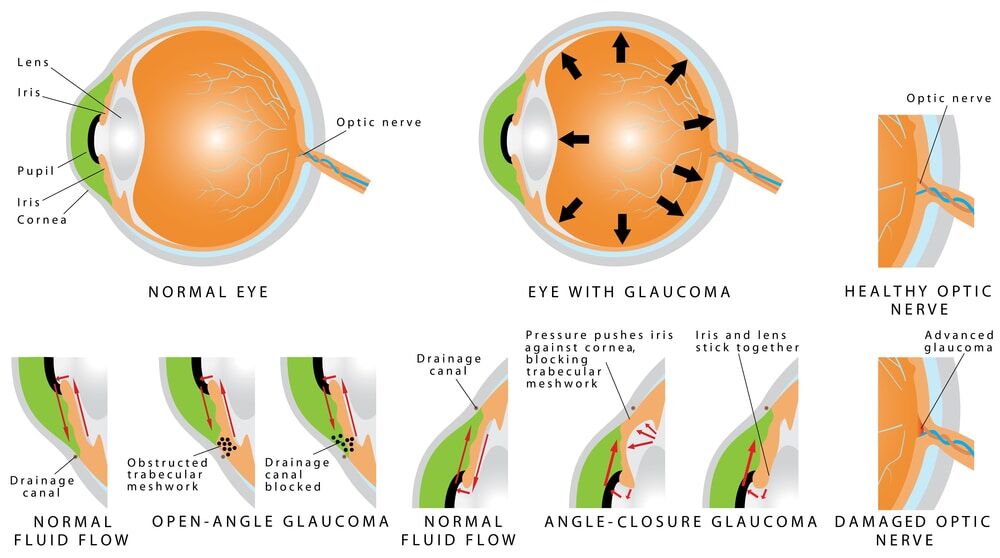Discover the most effective Glaucoma Service Near Me: Premier Eye Specialists
Discover the most effective Glaucoma Service Near Me: Premier Eye Specialists
Blog Article
Understanding the Different Vision Adjustment Procedures Available for Clearer Sight
In the world of vision improvement treatments, a plethora of choices exist to deal with refractive mistakes and supply individuals with clearer sight. From the commonly identified LASIK surgery to much less intrusive treatments like PRK and implantable lenses, the field of ophthalmology provides a variety of methods tailored to suit different demands and choices. Each procedure comes with its own set of considerations, benefits, and potential risks. Understanding the nuances of these vision improvement approaches is crucial for making notified decisions about one's aesthetic health. Allow's check out the intricacies of these treatments and clarified the path to achieving boosted vision clearness.
LASIK Surgical Procedure
LASIK surgical treatment is a common refractive procedure made use of to correct vision problems such as farsightedness, astigmatism, and nearsightedness - eyecare near me. This surgical technique, which means Laser-Assisted in Situ Keratomileusis, aims to reshape the cornea to boost just how light is concentrated on the retina, inevitably enhancing vision quality. During the procedure, a thin flap is created on the cornea, and a laser is utilized to get rid of precise quantities of cells to improve it properly. This reshaping permits light to be properly concentrated onto the retina, correcting refractive errors.
One of the primary advantages of LASIK surgical treatment is the rapid enhancement in vision experienced by individuals. On the whole, LASIK surgery is a preferred option for individuals seeking a long-lasting service for their vision troubles.
PRK Treatment
While likewise a typical refractive treatment, the PRK (Photorefractive Keratectomy) method varies from LASIK surgical procedure in its approach to dealing with vision troubles. In PRK, rather of developing a flap on the cornea, the external layer of the cornea, called the epithelium, is totally removed. This permits the laser to reshape the cornea to deal with refractive errors such as nearsightedness, farsightedness, and astigmatism straight on the surface area.

In spite of the longer recuperation time, PRK can produce superb cause vision enhancement, making it a beneficial option for those who might not be appropriate prospects for LASIK surgical treatment.
Implantable Lenses
In comparison to PRK where the cornea is improved directly, implantable lenses offer another technique for correcting vision by placing fabricated lenses inside the eye. This treatment is especially valuable for people with high levels of nearsightedness, astigmatism, or farsightedness who might not be appropriate prospects for laser surgeries like LASIK or PRK.
Implantable lenses, additionally called phakic intraocular lenses, job by supplementing the eye's natural lens with an artificial one. glaucoma service near me. These lenses can be put before the natural lens (anterior chamber) or behind the iris and in front of the all-natural lens (posterior chamber) By readjusting the power and positioning of these lenses, eye her latest blog doctors can efficiently fix refractive errors and enhance aesthetic skill
One advantage of implantable lenses is that they are exchangeable and detachable, providing adaptability for future adjustments. Nonetheless, similar to any operation, there are threats included, my explanation such as infection or cataract formation. Clients taking into consideration implantable lenses should seek advice from an eye care specialist to identify the most ideal alternative based on their private needs and eye wellness.
Corneal Rings
Corneal rings, likewise called intracorneal ring sections, are little, transparent tools put right into the cornea to correct vision distortions such as keratoconus. Keratoconus is a problem where the cornea thins and protrudes external, causing vision to end up being altered. The insertion of corneal rings assists to flatten the cornea, improving visual skill and decreasing the irregular astigmatism triggered by keratoconus.
The procedure for inserting corneal rings is reasonably fast and minimally invasive, commonly carried out as an outpatient procedure. During the surgical treatment, the ophthalmologist makes a small laceration in the cornea and inserts the rings at a certain depth. When in location, the rings help to improve the cornea, offering a smoother surface for light to get in the eye, which can cause more clear vision.
Corneal rings are considered a reversible treatment, as they can be gotten rid of or replaced if required. refractive surgeries in al. While they might not totally get rid of the demand for glasses or call lenses, corneal rings can substantially improve vision quality and overall visual convenience for individuals with keratoconus or various other corneal abnormalities
Refractive Lens Exchange
Following the correction of corneal irregularities with treatments like corneal rings, another vision adjustment technique that can attend to refractive mistakes is Refractive Lens Exchange (RLE) RLE is a medical procedure that involves replacing the eye's natural lens with a fabricated intraocular lens (IOL) to deal with refractive mistakes such as farsightedness, nearsightedness, and presbyopia. This treatment is especially advantageous for individuals that may not be suitable prospects for treatments like LASIK or the original source PRK because of aspects such as thin corneas or high refractive errors.

Conclusion
In conclusion, there are numerous vision correction procedures readily available to aid people attain more clear view. LASIK surgical treatment, PRK procedure, implantable lenses, corneal rings, and refractive lens exchange are all options that can deal with various vision issues.
In the world of vision correction treatments, a multitude of alternatives exist to attend to refractive errors and give people with clearer sight.LASIK surgical procedure is an usual refractive treatment utilized to remedy vision troubles such as nearsightedness, astigmatism, and farsightedness.While likewise a typical refractive treatment, the PRK (Photorefractive Keratectomy) technique varies from LASIK surgical treatment in its approach to fixing vision troubles.Adhering to the modification of corneal irregularities with procedures like corneal rings, an additional vision correction strategy that can resolve refractive errors is Refractive Lens Exchange (RLE) LASIK surgery, PRK procedure, implantable lenses, corneal rings, and refractive lens exchange are all options that can address various vision issues.
Report this page